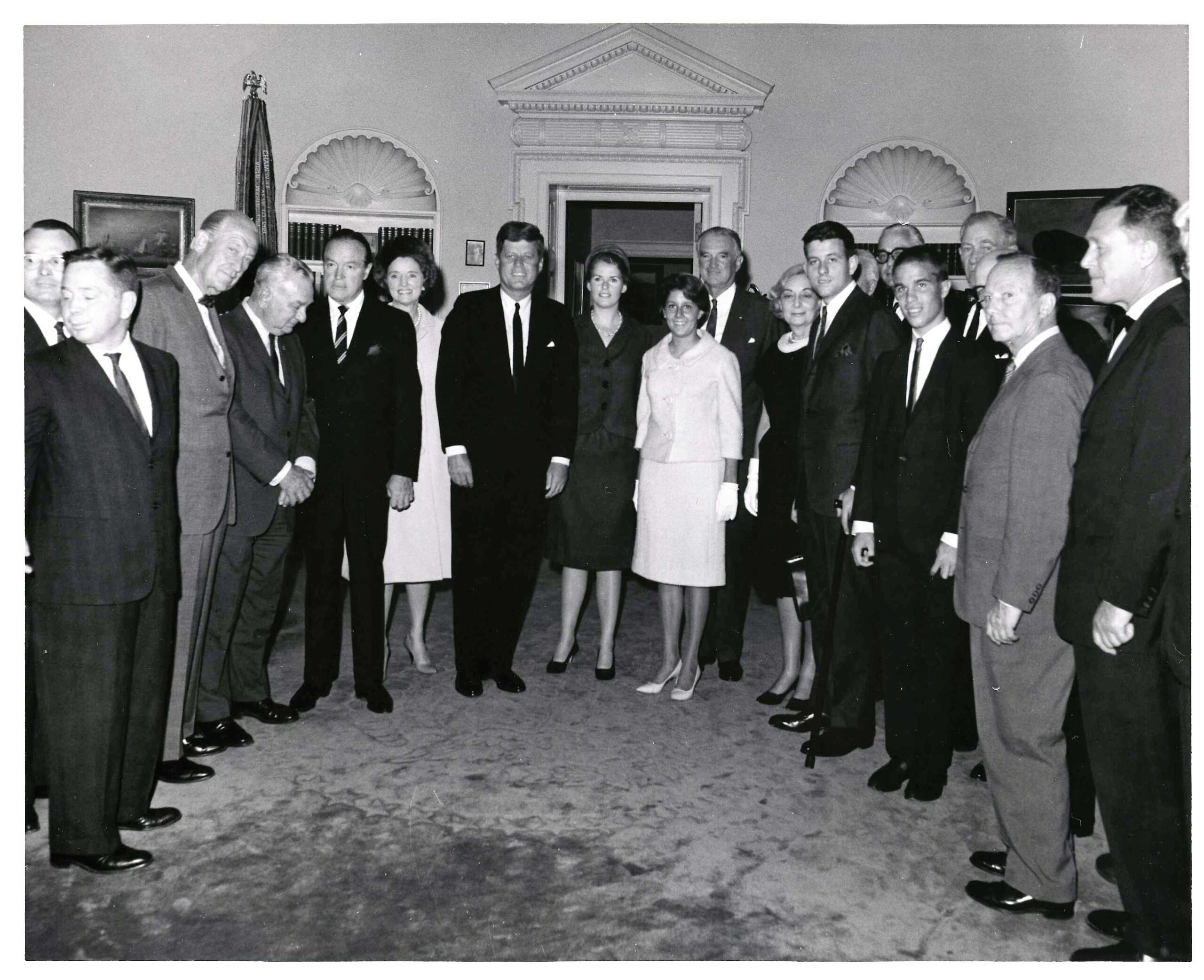
The term “junk fees” has become an all-too-familiar source of frustration for American consumers, representing those hidden, often unavoidable charges that inflate the final price of everything from a concert ticket to a hotel stay. These unexpected costs chip away at household budgets, making comparison shopping a nightmare and eroding trust between businesses and their customers. For too long, consumers have been subjected to “bait-and-switch” or “drip” pricing tactics, where an appealing initial price gradually balloons with additional mandatory fees revealed only late in the transaction.
But change is on the horizon, and it’s bringing much-needed transparency to the marketplace. The Federal Trade Commission (FTC) has stepped in with a robust new rule specifically designed to tackle these unfair and deceptive fee practices head-on. This landmark regulation aims to empower consumers by ensuring they know the full, “all-in” price upfront, enabling more informed purchasing decisions and fostering fairer competition among businesses. It’s a significant step toward rebalancing the scales in favor of the average American household.
This in-depth guide will walk you through the critical aspects of the FTC’s Rule on Unfair or Deceptive Fees, offering practical insights into how these changes will impact your everyday transactions. We’ll explore who the rule applies to, what fees must now be included in advertised prices, which charges can be excluded, and how businesses are expected to disclose pricing information clearly and conspicuously. Understanding these provisions is key to protecting your wallet and navigating the evolving landscape of consumer protections.

1. **The New FTC Junk Fee Rule: What It Is and When It Started**The Federal Trade Commission’s Rule on Unfair or Deceptive Fees, colloquially known as the “junk fee” rule, officially went into effect on May 12, 2025. This highly anticipated regulation targets misleading pricing practices, specifically prohibiting “bait-and-switch” or “drip” pricing where consumers are lured by an initial low price only to find mandatory fees added on later in the buying process. The rule represents a significant federal effort to inject transparency into pricing, ensuring consumers are fully aware of the total cost before committing to a purchase.
Interestingly, this rule was adopted with bipartisan support during the final days of the Biden presidency, demonstrating a rare consensus on an issue that broadly affects all consumers. Further solidifying its bipartisan nature, the Republican-led FTC under the Trump administration issued Frequently Asked Questions (FAQs) in May, providing additional guidance on the rule’s implementation. This broad political backing underscores the widespread recognition of junk fees as a detrimental practice that harms both consumers and ethical businesses.
The core of the rule mandates that if a business includes a price in its advertisements or offers, it must state the total price upfront. This “total price” must encompass all mandatory fees or fees that cannot reasonably be avoided, offering a clear and comprehensive view of what you’ll actually pay. This fundamental shift aims to eliminate the frustration of discovering hidden costs at the last minute, allowing for genuine price comparison and budgeting.
Violations of this rule carry substantial consequences. The FTC is authorized to seek significant civil penalties, amounting to up to $53,088 per violation. This figure is indexed annually for inflation, ensuring that the deterrent remains robust over time. Such steep penalties provide a strong incentive for businesses to comply, highlighting the FTC’s commitment to rigorous enforcement and protecting consumers from deceptive pricing strategies.

2. **Who Does the Rule Cover? Specific Industries and Transactions**The FTC’s Rule on Unfair or Deceptive Fees is specifically tailored to address practices within two key sectors that have been notorious for junk fees: live-event ticketing and short-term lodging. This targeted approach means that businesses offering or advertising tickets for concerts, sporting events, theater, and other live performances fall squarely under the rule’s purview. It ensures that when you’re excitedly planning to see your favorite artist or team, the price you initially see is the price you can expect to pay.
Similarly, the rule applies to businesses providing short-term lodging, which includes a wide array of accommodations such as hotels, motels, inns, and vacation rentals. This scope extends to popular home-sharing and vacation rental platforms like Airbnb or VRBO, ensuring that cleaning fees, resort fees, and other mandatory charges are transparently presented. The goal is to bring clarity to the often-confusing world of travel accommodation pricing, helping you budget accurately for your next trip.
Importantly, the rule’s coverage is not limited to just direct sales to individual consumers (business-to-consumer, or B2C). It also extends to business-to-business (B2B) transactions, recognizing that misleading fees can impact commercial dealings just as much as individual purchases. Furthermore, the rule explicitly covers third-party platforms, resellers, and travel agents, regardless of whether the offers appear online, through mobile applications, in physical locations, or via other advertising means. This comprehensive approach closes potential loopholes, ensuring a broad application of fee transparency.
It’s worth noting that the FTC initially proposed a much broader scope for this rule, intending to cover a wider range of industries. However, the final rule was significantly narrowed to focus on live-event tickets and short-term lodging. Despite this narrower focus, the FTC has indicated its intent to continue addressing deceptive and unfair pricing practices in other industries by leveraging its authority under Section 5 of the FTC Act. This suggests that while the current rule is specific, the broader regulatory environment is still moving towards greater fee transparency across various sectors.

3. **The “All-In” Price: What Fees Must Be Included Upfront?**At the heart of the FTC’s new rule is the imperative for businesses to present an “all-in” price upfront. This means that if a business chooses to include any pricing information in its advertisements or offers, it must clearly state the total price that consumers will pay. This total price is not just the base rate; it must incorporate all mandatory fees or charges that a consumer cannot reasonably avoid as part of the transaction. This foundational requirement marks a significant shift from past practices where such fees were often hidden until later in the booking or purchasing process.
Think about those frustrating moments when booking a hotel room online, only to find a hefty “resort fee” added at the final checkout screen, or a “cleaning fee” for a vacation rental that wasn’t apparent until you were ready to pay. Under the new rule, these types of mandatory charges—like hotel resort fees, cleaning fees for home share stays, or concert ticket processing fees—must be included directly within the initially advertised total price. The intent is to eliminate these unwelcome surprises and allow consumers to compare true costs from the outset.
The FTC has been particularly clear on what constitutes a mandatory fee that must be included. This extends beyond obvious charges to encompass fees for electronic ticket “delivery,” “convenience,” or any similar mandatory fees that consumers are compelled to pay to complete their purchase. If you have no choice but to pay it, it must be part of the upfront total. This clarity aims to prevent businesses from simply renaming mandatory charges to circumvent the rule’s intent.
Furthermore, the rule clarifies that charges for ancillary goods or services that people *must* buy to make the underlying good or service fit for its intended purpose, and which reasonable consumers would expect to be part of the purchase, must also be included. For instance, if a hotel mandates guests pay for towels, that towel fee must be baked into the total price advertised. This provision ensures that essential components of a service are not unbundled and presented as separate, hidden costs.

4. **What Fees Can Be Excluded from the Advertised Price?**While the FTC rule emphasizes comprehensive upfront pricing, it does acknowledge that certain types of charges can legitimately be excluded from the initially displayed total price. These exclusions are narrow and specific, designed to allow for flexibility where variable or external costs are involved, without undermining the principle of transparency. Understanding these exceptions is crucial for consumers to discern which fees are truly optional or external and which should have been included upfront.
Firstly, government charges, such as taxes, are permitted to be excluded from the initial total price. These are often variable based on location and can be complex to calculate precisely at the initial advertising stage. Similarly, shipping charges for physical goods can also be excluded. The rule specifies that these shipping charges must reasonably reflect the business’s actual costs to ship goods, allowing for flat-rate shipping or costs based on national averages. It’s important to note, however, that “handling charges” are *not* considered shipping charges and must be included in the total price.
The third category of excluded fees relates to charges for optional goods or services. These are items or services that consumers may choose to add to their transaction but are not mandatory for the core purchase. For example, if a live music venue offers an optional VIP package with drinks and an appetizer, the cost of that package does not need to be included in the advertised price of a standard event ticket. Similarly, opting to rent binoculars at a sporting event or choosing a trip protection plan that requires an affirmative check-box selection would fall under this exclusion.
Even when these charges are excluded from the upfront total, businesses are still obligated to disclose them clearly and conspicuously at a later stage, specifically *before* asking for payment. This disclosure must include the nature, purpose, and amount of the fee or charge, along with the good or service for which it is imposed. The ultimate goal remains full transparency, ensuring that consumers are fully informed of all costs before making their final payment decision, even for those charges not included in the initial “all-in” price.
Read more about: Unmasking the Discount Deception: Your Essential Guide to Fair Pricing and Service Rights

5. **How Fees Must Be Disclosed: Clarity, Prominence, and Timing**The FTC rule doesn’t just dictate *what* fees must be disclosed; it also sets clear standards for *how* and *when* that information must be presented to consumers. The guiding principle is “clear and conspicuous,” meaning that all disclosures must be easy for people to understand and difficult for them to miss. This goes beyond simply listing fees in fine print; it demands active visibility and comprehensibility, especially concerning the total price.
A key requirement is that the total price must be displayed more prominently than any other pricing information presented by the business. The only exception to this prominence rule is the final amount owed, which must also be clearly and conspicuously disclosed. This ensures that consumers are immediately drawn to the complete cost, rather than being distracted by fragmented or lower base prices. The visual hierarchy of pricing information is now a critical compliance point, designed to prevent consumers from inadvertently overlooking mandatory charges.
For any fees or charges that are permitted to be excluded from the initial total price—such as taxes or shipping—businesses are still required to disclose them clearly and conspicuously before the consumer consents to pay. This disclosure must articulate the nature, purpose, and amount of the fee or charge, identifying precisely what good or service it pertains to. For example, if shipping is excluded, the business must clearly show the shipping cost and explain it as such, before you reach the payment stage.
The definition of “clear and conspicuous” is comprehensive, addressing various media types. For visual advertisements, the disclosure must stand out, considering its size, contrast with the background, location, and the length of time it appears on screen. For audible disclosures, like those in radio or video ads, the volume, speed, and cadence must be sufficient for ordinary consumers to easily hear and understand. Crucially, for interactive electronic media, such as websites or mobile apps, the disclosure must be unavoidable, ensuring that users cannot bypass critical pricing information. All disclosures must also use plain language, avoid contradiction, and be in the same language as the offer itself.

6. **Understanding Mandatory vs. Optional Ancillary Services**The rule carefully distinguishes between mandatory and optional ancillary goods or services, and this distinction is crucial for determining what must be included in the upfront total price. Ancillary goods or services are simply additional items or offerings that a business provides as part of the same transaction. The key question, however, is whether a consumer *must* acquire them, or if they have a genuine choice.
Fees or charges for ancillary goods or services are considered mandatory if they meet any of several conditions. This includes fees for goods or services that people are required to pay no matter what, or those they cannot reasonably avoid, such as a credit card processing charge if no other viable, fee-free payment option is offered. Furthermore, if an ancillary good or service is necessary to make the underlying purchase fit for its intended purpose, or if a reasonable consumer would expect it to be part of the purchase, its associated fee becomes mandatory for upfront inclusion. A hotel requiring guests to pay for towels is a clear example of such a mandatory ancillary service.
Crucially, the rule also considers fees mandatory if people cannot effectively agree to them because the business employs deceptive practices. This includes default billing, pre-checked boxes, or opt-out provisions that effectively force a charge unless the consumer actively notices and challenges it. For instance, if a hotel automatically charges a resort fee at check-in but only waives it if a guest explicitly requests, that fee is deemed mandatory and must be included in the total price upfront. This aims to combat practices that exploit inattention or make opting out unduly burdensome.
Conversely, businesses do not need to include fees for *optional* ancillary goods or services in the upfront total price. These are items that consumers genuinely choose to add to their transaction. Examples include a comedy club offering a choice between paying with a credit card (with a surcharge) or a payment app (without), assuming both are viable options. Similarly, a VIP package for a concert or the option to rent binoculars at a sporting event, where the consumer actively selects these add-ons, are considered optional. However, even these optional fees must be clearly disclosed and included in the final amount of payment before a consumer is prompted to pay.

7. **Credit Card Surcharges: When They’re Allowed and How They’re Disclosed**Credit card surcharges and other payment processing fees have long been a point of confusion and frustration for consumers. The FTC’s new rule provides clarity on when businesses can charge these fees and how they must be disclosed, ensuring transparency and fairness in payment options. The fundamental principle is whether the credit card payment is truly optional or a mandatory component of the transaction.
Businesses are generally permitted to charge or pass through credit card or other payment processing fees, provided that such practices are allowed by state and federal law. However, if a business *requires* consumers to pay with a credit card, making it the only viable payment method without a fee, then any associated credit card fee becomes mandatory. In such a scenario, this mandatory fee *must* be included in the upfront total price advertised to the consumer. This prevents businesses from advertising a lower price while forcing consumers into a payment method that carries an undisclosed mandatory surcharge.
On the other hand, if a business offers another viable payment method at the same location or platform that does not incur a fee, then choosing to use a credit card (which does incur a fee) is considered an optional ancillary service. In this case, the credit card surcharge does *not* need to be included in the initial total price. For example, if a venue offers payment via a fee-free payment app, a debit card, or cash, alongside a credit card option with a surcharge, the surcharge is optional.
Despite being excluded from the initial total price when optional, credit card surcharges must still be clearly disclosed to the consumer. Before asking for payment, the business must include this fee in the final amount of payment, disclose its nature and purpose, and must not misrepresent the purpose or amount of the charge. The rule aims to give consumers a genuine choice and full information about the costs associated with their preferred payment method, ensuring that if they opt for a fee-carrying method, they do so with full awareness.

8. **Interplay with State Laws: Setting a Floor, Not a Ceiling**While the FTC’s new rule marks a significant federal intervention against junk fees, it’s crucial for consumers and businesses alike to understand that it doesn’t operate in a vacuum. The rule specifically acknowledges the ongoing relevance of state and local laws regarding fee transparency. The FTC views its regulation as setting a “floor” for consumer protection, meaning it establishes minimum standards that businesses must adhere to, but it does not prevent states from enacting more stringent requirements.
Indeed, several states have already taken proactive steps to address inadequately disclosed fees, often with a broader scope than the FTC’s current rule. States such as California, Minnesota, Massachusetts, Colorado, and Virginia have adopted their own laws and regulations, with others like Illinois, Florida, and North Carolina actively considering similar measures. Unlike the federal rule, which is currently focused on live-event tickets and short-term lodging, many of these state laws apply across a wider array of industries, offering broader consumer protections.
For businesses, this means navigating a complex regulatory landscape. Compliance with the federal rule does not absolve them from also adhering to all applicable state or local laws. In situations where a state or local law directly conflicts with the FTC rule, the federal regulation will supersede only to the extent of that direct conflict. However, if a state or local law provides greater protections for consumers than the federal rule, businesses are obligated to comply with those enhanced state-level protections.
Even for businesses not directly covered by the FTC’s rule, the existence of these state laws and the FTC’s broader authority under Section 5 of the FTC Act serve as a powerful incentive to review their pricing practices. Adopting transparent, all-in pricing strategies is not just about federal compliance; it’s about minimizing legal risk and building consumer trust in an increasingly regulated environment.

9. **Prohibited Deceptive Practices: Beyond Hidden Fees**The FTC’s rule isn’t just about ensuring fees are included in the total price; it also directly tackles misrepresentations about those fees, aiming to foster genuine honesty in consumer transactions. The rule mandates that businesses must tell the truth about all fee-related information, including the amount, purpose, and even the refundability of any charges. This goes a step further than mere disclosure, demanding accuracy and clarity in how fees are presented and explained.
To combat ambiguity and potential deception, businesses are specifically instructed to avoid vague language when describing fees. Terms like “convenience fees,” “service fees,” or “processing fees,” which often lack a clear explanation of their actual purpose, are discouraged. Instead, the rule pushes for transparent descriptions that genuinely inform the consumer about what they are paying for.
The FTC has provided several illuminating examples of misrepresentations that would violate the rule. Imagine a hotel charging an “environmental fee” but failing to use the funds for any actual environmental sustainability or conservation efforts – that’s a clear violation. Similarly, a ticket seller falsely claiming a “usage fee” is mandated by the government when it is not would also be in breach of the rule’s honesty requirements.
Another significant example highlights issues in the ticketing market: a speculative ticket seller advertising tickets for a sold-out concert at a specific price, but not actually possessing those tickets. The rule deems such tickets as not “available” at the time of the offer, making the advertisement deceptive. Furthermore, inflating actual government taxes and fees with additional profit under a “taxes and fees” charge at checkout is explicitly prohibited, emphasizing that itemized charges must be truthful and not used to disguise hidden profits.
These prohibitions underscore the FTC’s commitment to ensuring not only that fees are disclosed, but that the information provided about them is accurate and forthright, empowering consumers to make choices based on verifiable facts rather than misleading claims.

10. **Online Marketplaces and Intermediaries: Shared Responsibility for Transparency**The landscape of modern commerce often involves multiple parties, especially in the live-event ticketing and short-term lodging sectors, where online marketplaces, resellers, and travel agents frequently act as intermediaries. Recognizing this, the FTC rule extends its reach to clarify the responsibilities of all entities involved in these transactions, ensuring a cohesive approach to fee transparency.
Businesses that list or advertise their services on online marketplaces are now explicitly required to provide those platforms with accurate pricing information. This includes all details about both mandatory and optional ancillary goods and services. This provision aims to ensure that the initial data provided to the marketplace is complete, preventing hidden fees from being introduced at a later stage by the original seller.
Crucially, online marketplaces and other intermediaries, including those in the secondary ticket market, share a significant responsibility. If they are involved in offering, displaying, or advertising the price of a good or service, they must provide sellers with all necessary information to calculate the total price. For instance, if an intermediary levies a fee to access its platform, and that fee is passed on to the consumer, the intermediary must ensure the seller receives accurate details about this fee so it can be incorporated into the upfront total price.
Furthermore, if these intermediaries choose to display the pricing information on behalf of the seller, they are then directly responsible for displaying the total price themselves. This means they must receive all necessary pricing components from the sellers to accurately calculate and present the “all-in” cost to the consumer. This comprehensive approach ensures that transparency is maintained throughout the entire sales chain, from the initial offer to the final payment.
This collaborative responsibility is a vital component of the rule’s effectiveness, especially in complex ecosystems like the secondary ticket market, where multiple players can inadvertently or intentionally obscure pricing. By holding all parties accountable, the FTC aims to create a seamlessly transparent purchasing experience for both individual and business consumers.

11. **Discounts and Promotional Pricing: Keeping Offers Honest**The FTC’s rule on junk fees aims for comprehensive price transparency, but it also acknowledges the dynamic nature of marketing, including discounts and promotional pricing. The rule provides flexibility for businesses to continue offering promotions, but it sets clear guidelines to prevent these offers from becoming another avenue for deceptive practices. The core principle is that if a discount or promotion isn’t universally available, the initial advertised total price should not reflect that special offer.
This means that the “all-in” price displayed upfront must be the price available to the general public, or to everyone, unless a specific individual has already met the precise requirements for a particular discount. For example, if a loyalty program offers a special price to its members, the initial total price shown to a non-member should not include that loyalty discount. Only once a consumer successfully enrolls or meets the criteria for the promotion can the business then update the total price to reflect the reduced amount.
The rule provides clear illustrations to guide businesses. Consider a “Buy One Get One Free” promotion: a business must initially display the total price without the promotion most prominently. The discounted price only becomes the prominent total once the transaction unequivocally meets the specific requirements for that BOGO offer. This ensures that consumers aren’t drawn in by a seemingly lower price that they may not actually qualify for.
However, the rule also offers some latitude. If a business advertises a general discount, such as “50% off,” without specifying the price of any particular good or service, then this general advertisement does not require the disclosure of a “total price.” This distinction helps businesses use broad promotional messaging without triggering the detailed “all-in” pricing requirements until specific goods or services are offered at a price. The intention is to enable genuine promotions while safeguarding against misleading initial price points.

12. **Dynamic Pricing and Future Fee Considerations: Adapting to Market Realities**The modern marketplace is characterized by fluid pricing strategies, and the FTC rule accommodates this by allowing businesses to continue using dynamic pricing. This approach, where prices adjust based on factors like demand, inventory, or even regional variations, remains permissible, provided the pricing information is consistently truthful and not misleading. Many businesses, for instance, rely on localized advertising to reflect price variations, and this practice can continue within the framework of the new rule.
Beyond immediate pricing, the rule also addresses fees that might not be immediately calculable at the time of an initial offer because they depend entirely on consumer choices or behavior during the transaction. In such instances, businesses are permitted to exclude these variable fees from the upfront total price. However, once a consumer makes a choice that influences the price, such as selecting an upgraded seat or an optional hotel feature, the displayed total price must be promptly updated to accurately reflect that decision.
For example, a theater can advertise the lowest available general admission ticket price, but if a patron then opts for more expensive balcony seats, the total price must be revised accordingly. Similarly, when booking a hotel, the advertised room rate can be the lowest available, but as a guest selects various optional features, the total price must transparently update to include these choices. This ensures that while initial flexibility exists, the consumer is always aware of the true cost of their chosen options before payment.
The rule further distinguishes fees that might be incurred *after* the initial purchase. Fees that couldn’t possibly be known at the time of purchase, or those clearly not considered part of the core transaction, can be excluded from the total price. Examples include charges for late payment or fees for damage caused to a hotel room. These provisions strike a balance, allowing for the practicalities of business operations while maintaining the central goal of upfront transparency for all mandatory and foreseeable costs.

13. **Consequences of Rule Violations: What Happens When Businesses Don’t Comply**The FTC’s Rule on Unfair or Deceptive Fees is backed by substantial enforcement power, making compliance a serious matter for businesses. Violations are not merely administrative oversights; they carry significant financial and operational consequences designed to deter deceptive pricing practices and protect consumers.
The most prominent enforcement tool is the imposition of civil penalties. The FTC is authorized to seek fines amounting to up to $53,088 per violation. This figure is not static; it is indexed annually for inflation, ensuring that the deterrent remains robust and continues to reflect the gravity of non-compliance over time. For businesses that engage in widespread deceptive practices, these per-violation penalties can quickly escalate into substantial financial liabilities.
Beyond monetary fines, businesses found in violation of the rule can face additional remedial actions. The FTC has the authority to issue orders requiring companies to bring their practices into full compliance with the rule. This could involve significant changes to their advertising, website design, and internal pricing systems, potentially incurring substantial operational costs.
Furthermore, the Commission can order businesses to refund money back to consumers who have been harmed by the deceptive fee practices. This restitution aims to directly compensate consumers for the hidden or misrepresented charges they were unfairly subjected to, reinforcing the consumer-centric nature of the rule. The combined impact of civil penalties, compliance orders, and consumer refunds underscores the FTC’s commitment to rigorous enforcement and ensuring a fair marketplace.

14. **Long-Term Benefits and Broader Implications: A New Era of Fairness**While the FTC’s new rule on junk fees specifically targets live-event ticketing and short-term lodging, its long-term benefits and broader implications extend far beyond these sectors. This landmark regulation marks a pivotal moment in consumer protection, signaling a decisive shift towards greater transparency across the American economy. The clear message from regulators is that hidden fees and misleading pricing tactics will no longer be tolerated.
The most immediate and significant benefit for American families is the ability to make truly informed purchasing decisions. With “all-in” pricing displayed upfront, consumers can accurately compare costs, budget effectively, and avoid the unpleasant financial surprises that junk fees have historically caused. This newfound clarity reduces financial strain and builds confidence in the marketplace, knowing that the price seen is the price paid.
Moreover, the rule is a powerful catalyst for fair competition. By mandating that all businesses disclose their full prices upfront, it levels the playing field. Companies can no longer gain an unfair advantage by luring customers with artificially low base prices only to tack on mandatory fees later. This encourages businesses to compete on the true value and quality of their services, potentially leading to lower overall prices for many goods and services as competition intensifies.
Looking ahead, this federal action, coupled with the wave of state-level legislation, suggests a broader regulatory environment moving towards universal fee transparency. Although the current rule is narrowly focused, the FTC has stated its intent to address deceptive pricing in other industries using its authority under Section 5 of the FTC Act. This indicates that the principles of upfront disclosure and honest pricing are likely to expand across various sectors, creating a more trustworthy and equitable marketplace for all consumers.
Read more about: Remember the’90s? These 16 Cultural Earthquakes Were the Absolute Rulers of Fear and the Midnight Show.
The crackdown on junk fees is more than just a regulatory adjustment; it’s a fundamental reassertion of consumer rights in an increasingly complex economy. It heralds a new era where transparency, fairness, and trust are paramount, allowing people to shop with greater confidence and financial security, knowing they are paying an honest price for everyday purchases.




